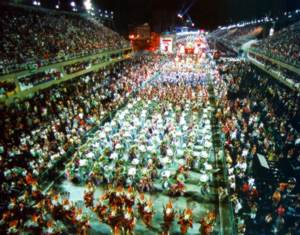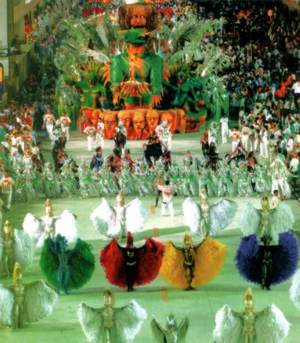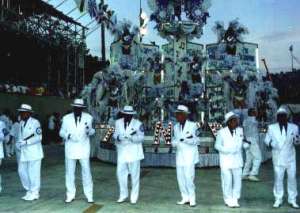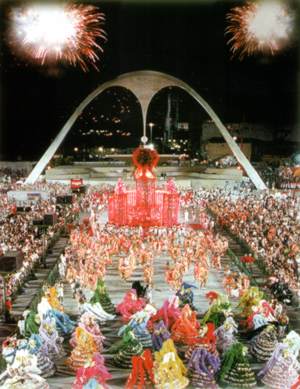Carnival
In its origins carnival traces back to celebrations on the Azores in the 15th and 16th century which were introduced in Rio in the course of the onset of colonialization. The poor, being excluded from clubs for a long time, organized their own carnival societies. Some of them became very famous, as for example the Cordão da Bola Preta, which traditionally opens carnival in Rio until today. The group's emblem is its flag with a black ball centered on a white background.
|
Carnival in Rio was celebrated in a larger frame in 1854 for the first time. Announcements invited everybody to participate - poor as well as rich. The organizing committee comprised lawyers, physicians, and journalists, public officials, business men, and officers. In 1870 the large societies were formed, which participated in the program arrangement until the samba schools (escolas de samba) appeared. These samba schools are nowadays the main attraction of carnival in Rio. The first one, Deixa falar, was founded in 1928, but in the early years the samba schools participated only unofficially. In 1938 they participated in the competition for the first time and the winner was the samba school Estacão Primeira de Mangueira. In the fifties the samba schools had managed to organize themselves well and meanwhile, introducing small modifications, they have become an institution.
but joy does! The poor man's joy - it lies in the big illusion of carnival. A whole year filled with work for a moment of fantasy, making people kings corsairs or gardeners - until Wednesday dawns and everything ends...» Lyrics and melody of any new samba are important discussion topics. In Rio and everywhere in Brazil the composers of popular sounds are adored, and not only by young people. Everybody knows them in the streets of Rio and they are held in correspondingly high esteem. |

|

|
|

|
|

|
|
| Back to Samba |